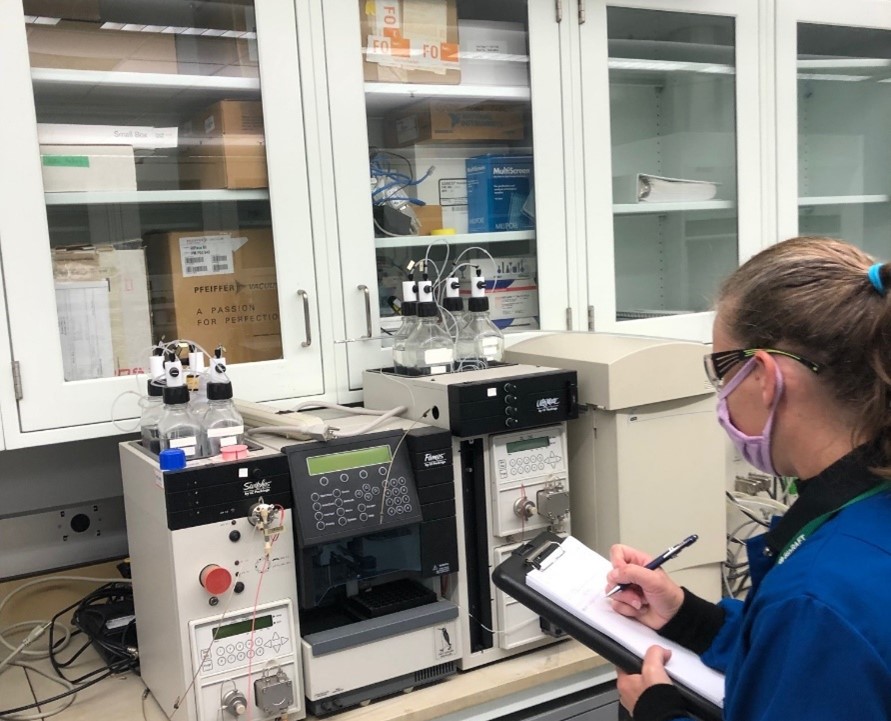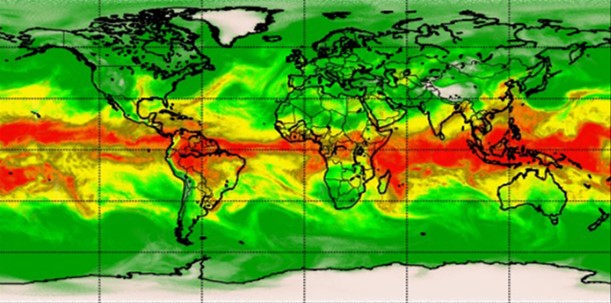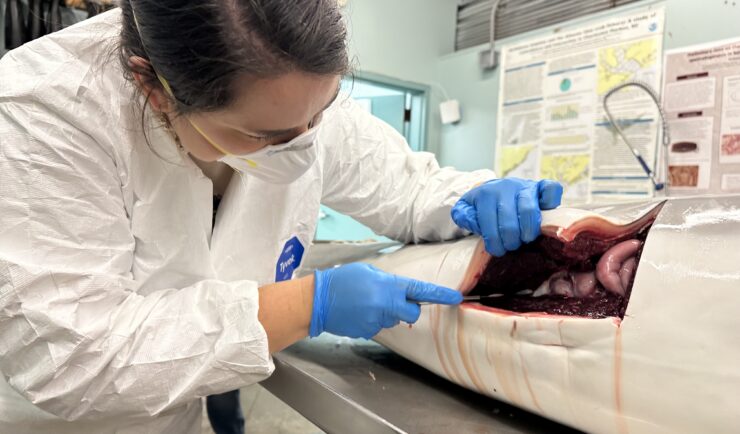- Community Spotlight, Uncategorized
- Safety, Health, & Environmental Compliance
Assessing Methylene Chloride Levels in Laboratories

CSS employee owners supporting the University of Kentucky have started sampling campus laboratories with high use of methylene chloride to assess levels of employee exposure. This effort is in response to the Environmental Protection Agency (EPA) issuing methylene chloride regulations under Section 6(a) of the Toxic Substance Control Act in the Federal Register on May 8, 2024. This regulation prohibits manufacturing, importing, processing, and distributing methylene chloride for all consumer use, and most industrial and commercial uses. The exception to this regulation encompasses 13 different areas, which includes research laboratories. However, with these regulations, EPA has a new occupational exposure limit, called an EPA existing chemical exposure limit (ECEL). The weight average (TWA) ECEL for the standard eight-hour period is 2 parts per million (ppm) with an Action Level of 1 ppm. If an exposure of methylene chloride is at the action level, then the worker needs to be put into a Workplace Chemical Protection Program. This plan outlines how to reduce the employee’s exposure. The rule indicates that initial exposure monitoring should be done by May 5, 2025.
To date, CSS has completed sampling in five laboratories covering six different uses of methylene chloride. The data shows, as of now, that using the chemical fume hood correctly keeps the methylene chloride exposure below the action level. However, operations occurring outside the chemical fume hood, then exposures are at the Action Level or near the eight-hour TWA ECEL.
The next steps are to finish the initial monitoring, as well as working with the laboratories using engineering control or substitutions (if possible) to reduce the exposure to methylene chloride.

Visit EPA’s webpage to learn more about risk management for methylene chloride.
See More CSS Insights

1000 Samples of Lake Water Collected and Processed
Congrats to our team supporting U.S. Environmental Protection Agency’s Office of Research and Development for completing the processing and initial chemical analyses of 1000 lake water samples! They received lake water samples from across the continental U.S. this past summer and have completed the initial chemical analyses as part of the U.S. EPA 2022 National…

Advancing Severe Weather Predictions with Artificial Intelligence
As artificial intelligence (AI) and machine learning (ML) technologies evolve in Earth sciences, CSS employee owners (formerly Riverside staff) are growing our expertise in this field. CSS employee owners are advancing technologies for our client, NOAA’s Center for Satellite Applications and Research (STAR). Our staff have developed a framework, exploiting modern AI/ML techniques, to rapidly…

Assisting South Carolina Marine Mammal Stranding Network
CSS employee owner and Marine Mammal Microplastic Specialist supporting NOAA’s National Centers for Coastal Ocean Science assists the South Carolina Marine Mammal Stranding Network in responding to dead marine mammals when they strand on beaches or estuaries throughout South Carolina. This is work is critical for human and environmental health because it provides invaluable samples…
